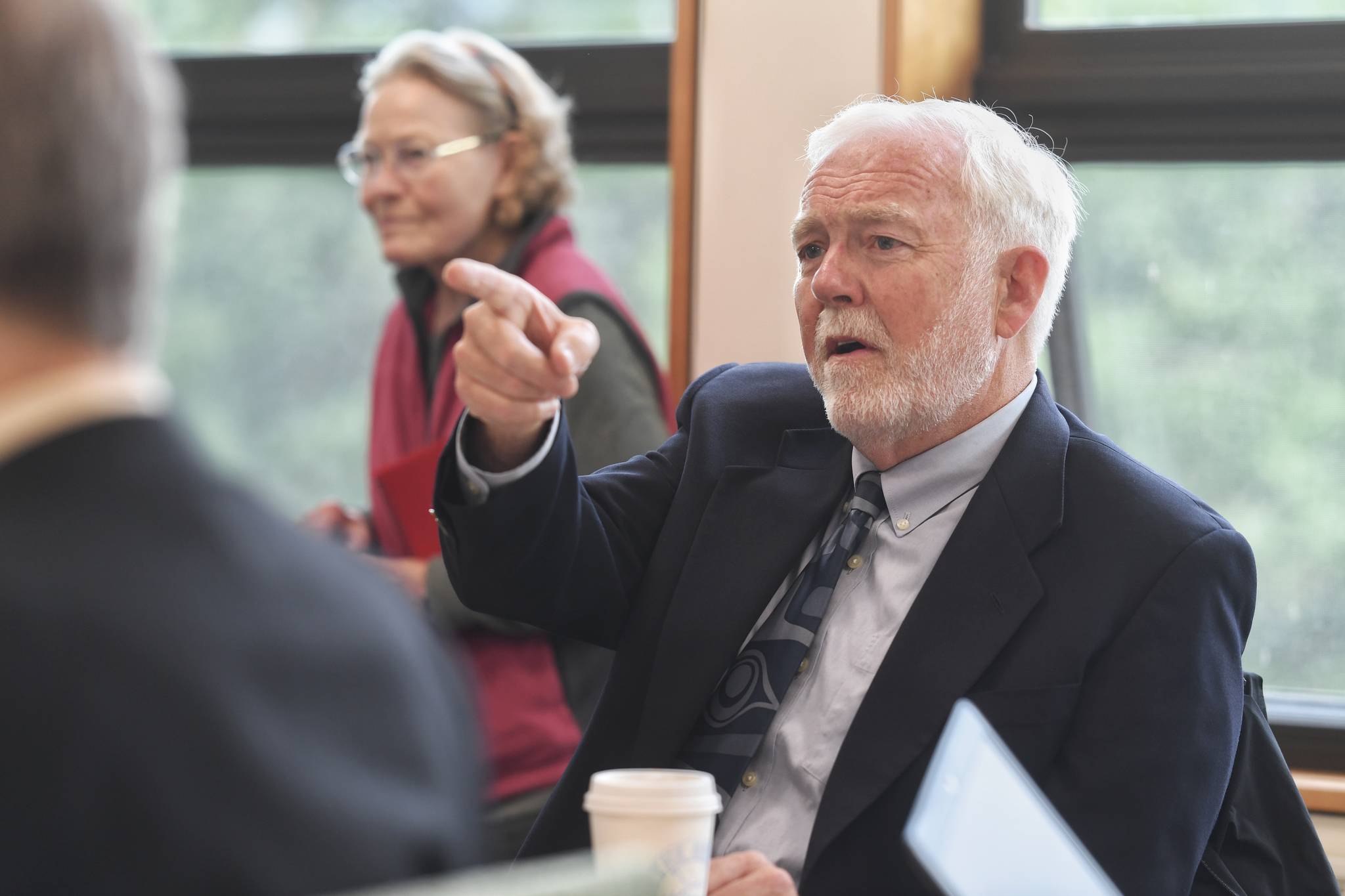The University of Alaska Board of Regents delayed declaring financial exigency Monday, during a meeting to discuss the cuts to the state budget made by Gov. Mike Dunleavy.
Meeting at different locations around the state and connected by teleconference, the board decided that because the legislature is still in session and the financial situation may change in the coming weeks, declaring exigency might be premature.
That decision was delayed until July 30, when the board will meet again to further discuss changes that must be made in light of the current financial circumstances.
University of Alaska General Counsel Michael Hostina made it clear during the meeting that financial exigency is neither a policy prescription, nor is it akin to bankruptcy.
“It doesn’t get rid of debts,” Hostina said. “It’s not a decision regarding the future of the university or what programs will be cut. The board will make those decisions later.”
Financial exigency is a legal tool, Hostina said, that allows the university to take certain actions, like the termination of tenured faculty, that might not be possible under normal circumstances.
But while the actual declaration was delayed, it was made clear during the meeting that the University of Alaska will no longer operate as it does now.
University of Alaska President Jim Johnsen made it clear to the board that UA was “already consuming money at an unsustainable level,” and that, “we cannot wait for a number from the legislature or the governor.”
Each day of delay, he told the board, compounded the cost of cuts that will need to be made later, adding $11 million dollars per day.
“Our core mission must be preserved,” Johnsen said. “To do that in this environment we will need to shed what is less precious, as difficult as that may be.”
Though no final decision has been made, Johnsen said that he was considering three different alternative structures which would allow the university to contiunue to function, albeit in very different form.
First, was the option of having fewer universities and campususes. While this would allow for certain limitations on what needed to be cut from the university system as a whole, it would undoubtedly cause negative economic impacts on the communities affected by closed campuses, and would indiscriminately eliminate strong as well as weak programs.
Second is the “Current UA, Lead Campus” option, which would distribute funds proportionately to each university, and have each university reduce it focus to its own unique core as described in the “Strategic Pathways” framework.
Strategic Pathways is how UA has intended to optimize the strengths of each university in order to provide the most robust educational services to Alaska.
The “Current UA” option has the advantage of maintaining access to education for a large number of Alaskans but could risk the financial viability and accreditation of each university.
Last is the “New UA” option, which would in effect mean that all students would recieve their degree from a single “University of Alaska” regardless of which campus they attend. This would have the advantage of reducing administrative overhead and eliminating duplicative programs, meaning only one campus could offer a certain program.
However, the New UA system would require significant time and effort in order to obtain accreditation and Department of Education approval.
In addition to the declaration being delayed until July 30, another meeting was scheduled with the Board and President Johnsen to further elaborate his thinking on the three options, allowing for the regents to make a more informed decision.
The pain and difficulty of restructuring the university system was emphasized repeatedly during the meeting, and Johnsen reiterated several times that although the future was uncertain, the University of Alaska remained dedicated to its core mission.
Johnsen, Board of Regents Chair John Davies and several others who spoke at the meeting gave thanks to the public and legislators who had shown such strong support for the university over the past week.
The PowerPoint presentation showing the university’s financial situation and detailing the various plans can be found here.
• Contact reporter Peter Segall at 523-2228 or psegall@juneauempire.com

